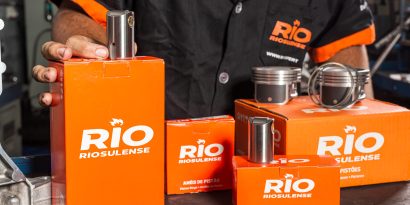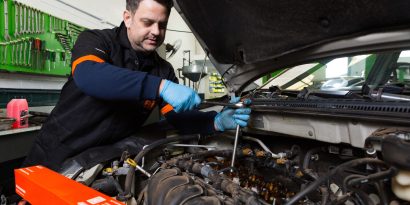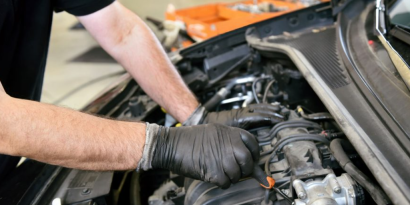As the year comes to an end, many drivers take advantage of vacations and the holiday break to travel and enjoy the coast. However, during this period of relaxation, the effects of sea air on cars can turn into a real headache. To prevent this, it’s important to monitor the condition of your vehicle.
Rich in salt particles, sea air is one of the biggest enemies of automobiles, causing corrosion and wear on various parts of the structure. For automotive maintenance experts, understanding the effects of this phenomenon and knowing how to address them is essential to offering quality service and protecting customers’ vehicles.
Contrary to popular belief, sea air doesn’t only affect the paint and bodywork; it can also compromise the functionality of internal components, such as engine parts and the exhaust system — especially when the effects of sea air on the car are neglected by drivers, increasing the risk of long-term issues.
But don’t worry! In today’s article, we’ll delve into the effects of sea air on cars, presenting the challenges it poses for repair shops and showing how mechanics can prepare to handle the damage caused by this natural agent. Let’s get started!
Understanding the effects of sea air on cars
Frequent readers of our blog know that sea air is composed of tiny salty water particles, which are carried by the wind and settle on vehicle surfaces, causing corrosion of metal materials and premature wear of components.
Its effects can be particularly aggressive on cars that spend long periods in coastal areas or are directly exposed to the marine environment. Typically, these effects manifest in the following ways:
1 – Corrosion of Paint and Bodywork
The car’s paint and bodywork are the most visibly affected areas. The salt in seawater reacts with metal and causes oxidation, which, if left untreated, can spread quickly, leading to rust and compromising the vehicle’s structure. Besides affecting the car’s aesthetics, this also reduces its durability.
2 – Surface Damage to Engine Components
Sea air can also reach the engine compartment, damaging metallic and electrical parts. Components such as alternators, battery terminals, and electrical connectors are particularly vulnerable since salt can corrode contacts and reduce the efficiency of the electrical system. Additionally, the entry of salty particles can impair the operation of filters and hoses.
3 – Accelerated Wear of the Exhaust and Suspension Systems
The exhaust system and suspension components, being located on the underside of the vehicle, are constantly exposed to sea air, especially on roads near the beach. Salt accelerates the wear of these parts, resulting in cracks, leaks, and even the premature need to replace critical components.
What Can Experts Do to Help?
After vacations, many vehicles return from the beach “contaminated” by salt — but the good news is that repair shops play an important role in helping drivers mitigate this damage and minimize the effects of sea air on cars. Here are some best practices to follow:
Conduct a Full Inspection
Check the bodywork, engine, exhaust system, and wheels for signs of corrosion or salt buildup. Early problem detection is crucial to avoid more severe damage and high repair costs.
Reinforce Vehicle Cleaning
Recommend a thorough car wash, including the underside, to remove salt residue. For added protection, suggest applying automotive waxes and sealants to create a protective barrier against sea air.
Test Electrical Components
Inspect battery terminals, connectors, and the alternator. Clean electrical contacts and apply anti-corrosion products to ensure the system operates correctly even after exposure to sea air.
Check the Brake and Suspension Systems
Remember that sea air can corrode brake discs and suspension components. During inspections, check these parts and clean or replace compromised components as needed.
By adopting these best practices, experts not only help clients extend the lifespan of their vehicles but also simplify the maintenance routine for loyal customers, ensuring their cars remain in good condition even after facing the effects of sea air.
Frequently Asked Questions
Can sea air damage a car’s paint?
Yes, the salt in sea air causes oxidation and can lead to corrosion of the paint and bodywork, resulting in rust.
Which engine parts are most affected by sea air?
Metallic and electrical components such as alternators, battery terminals, and connectors are most vulnerable to salt-induced corrosion.
How can I protect my car from sea air at the beach?
Regularly wash your car, apply automotive wax, and avoid leaving it directly exposed to the marine environment for extended periods.
Time to Get to Work!
As we’ve seen, dealing with sea air is a significant challenge for drivers in coastal regions. However, with proper care, its effects can be minimized. For maintenance specialists, paying attention to signs of corrosion and advising clients on protecting their cars ensures high-quality service and prolongs the vehicles’ lifespans.
And, of course, always use high-quality parts with guaranteed origin for any maintenance routine. In this regard, RIO stays ahead in supporting mechanics and specialists, offering a complete catalog of replacement parts for engines and automotive systems. Whether dealing with vehicles exposed to sea air or other challenges, RIO is the ideal partner for those seeking excellence in automotive repair and maintenance!





